A Backcountry Welding Lesson
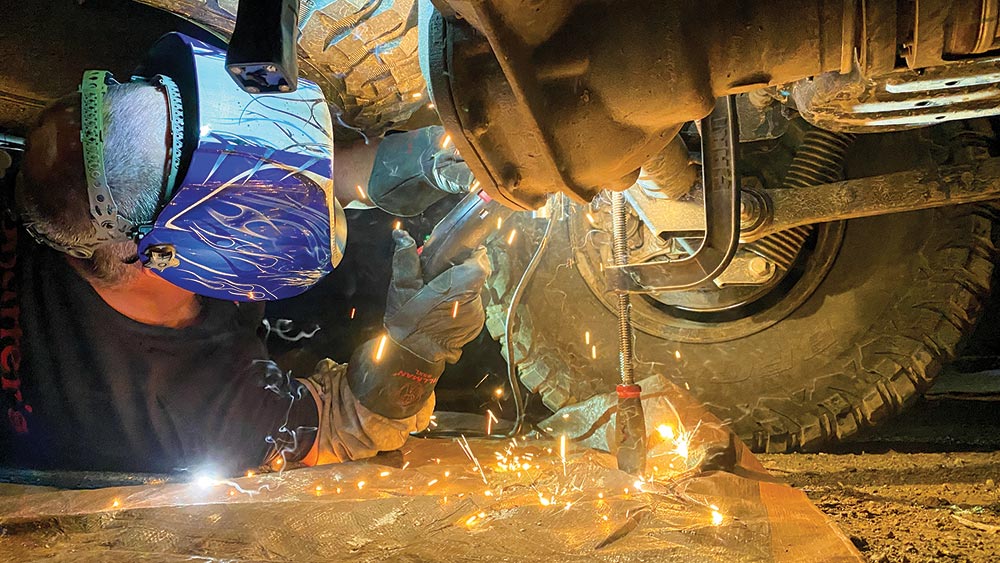
Jump into the fire by adding welding to your backcountry skill set.
In the early ‘90s I was on the Fordyce Trail in the Northern Sierra Nevada with a friend. We had winched a tree off the trail and after stowing my gear and turning the key, the steering wheel went limp like a wet noodle. Crawling underneath we found the J-arm between the pitman arm and the knuckle had broken. This was not a spare part I would have thought to carry, and our weekend trail ride suddenly looked like a multi-day vehicle recovery. In this issue of Tread we are launching Backcountry Skills, a new column focused on tips and tricks of the overlanding trade. While some topics might touch on assembling a recovery kit, improving your bushcraft, or setting up your toy hauler, for this inaugural column we are jumping straight into the fire. Yes, backcountry trail welding, and to hopefully help those wayward boys fix their J-arm.
For many, carrying a vehicle-based welder falls far off the priority list of must-have equipment. Comments I’ve heard include, “I’ve never needed one” “They are expensive and take up too much space” and “I don’t know how to weld.” Well, if you are in this game long enough, I guarantee you or one of your traveling mates will need to weld something. And if we showed you how to assemble a kit for less than $100 that will fit in a 12-pack cooler, would it change your mind?
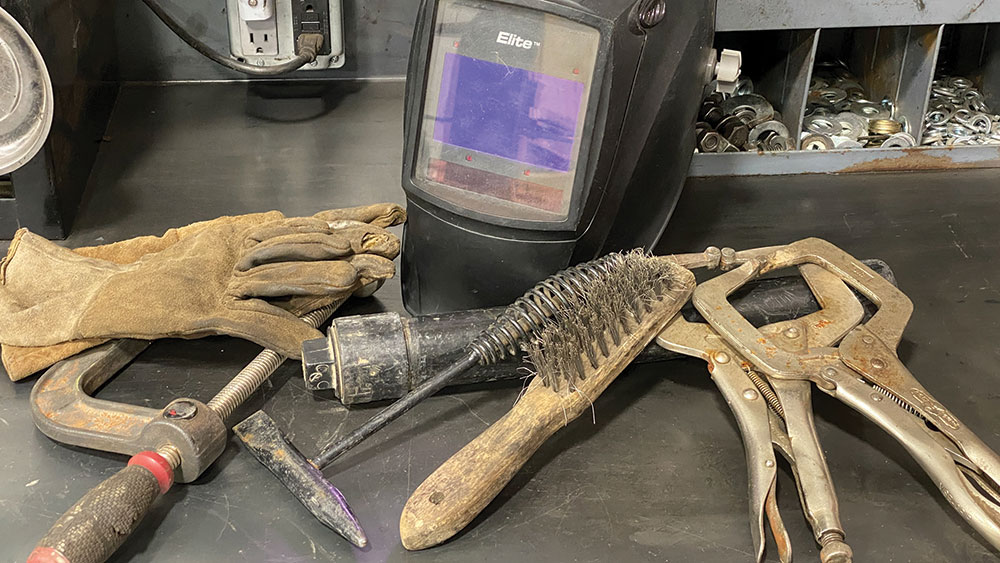
Accessory kit should include a hood, slag hammer, wire brush, and a protective tube to store a welding rod.
Fusion Basics
A weld, described as the localized coalescence of metals, fuses two like-type ferrous or alloy materials together, much like model cement fuses plastic. While the latter relies on a chemical reaction, the former requires heat generated when electrons pass through a resistive material. That material is air, and the more electrons that pass, the more heat it’ll generate. When you hook up a 12-volt car battery and see a small spark, this is a mini arc weld—whereas electrons are arcing momentarily from the post to the lug. If you maintain the air gap, the prolonged arc will melt the surfaces and create small divots. Increasing the voltage will increase the electron flow, heat, and ability to melt metal.
TIP: A weld is the fusing of two like-type metals.
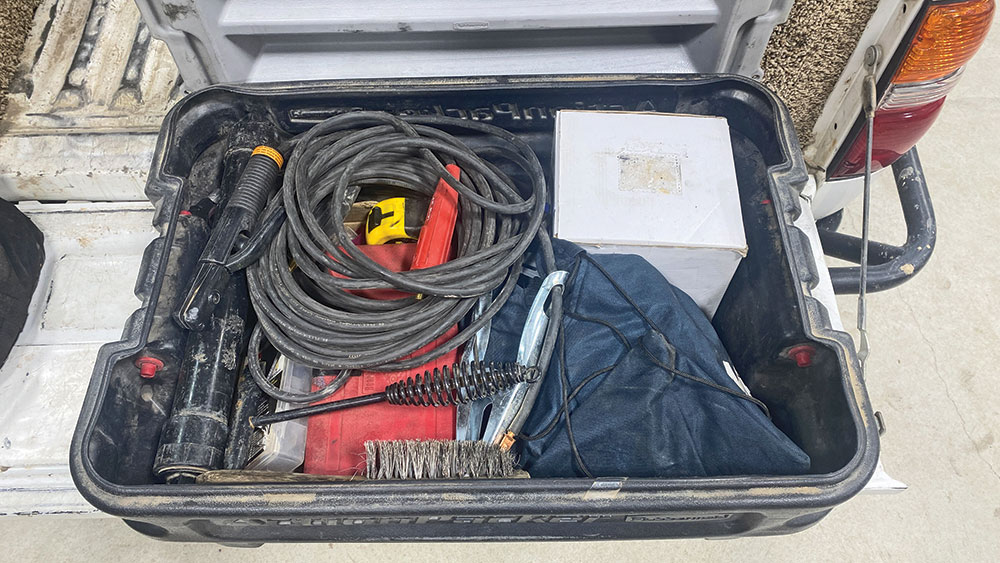
An Action Packer tote contains the author’s welding kit, extra tools, and a few spare parts.
The Accessory Kit
Like anything else, you’re going to need some gear. Regardless of method, your backcountry welding kit will need to include some common items: a face shield, leather gloves, side cutters, wire brush, and slag hammer. A pair of large-jaw Vice-Grips and C-clamps are also handy accessories. The shield should have a #12 shade lens or darker, and an auto-darkening hood such as my Miller Elite will make the job a lot easier. If you find yourself without a shield, stack four or five pairs of dark sunglasses together with duct tape (make sure the cheapo pair is on the front), wear a ball cap, and wrap a bandana or t-shirt around your face to avoid a severe sunburn. Action Packers are an inexpensive way to carry accessories and tools.
TIP: Protect your eyes and face with a proper welding shield.
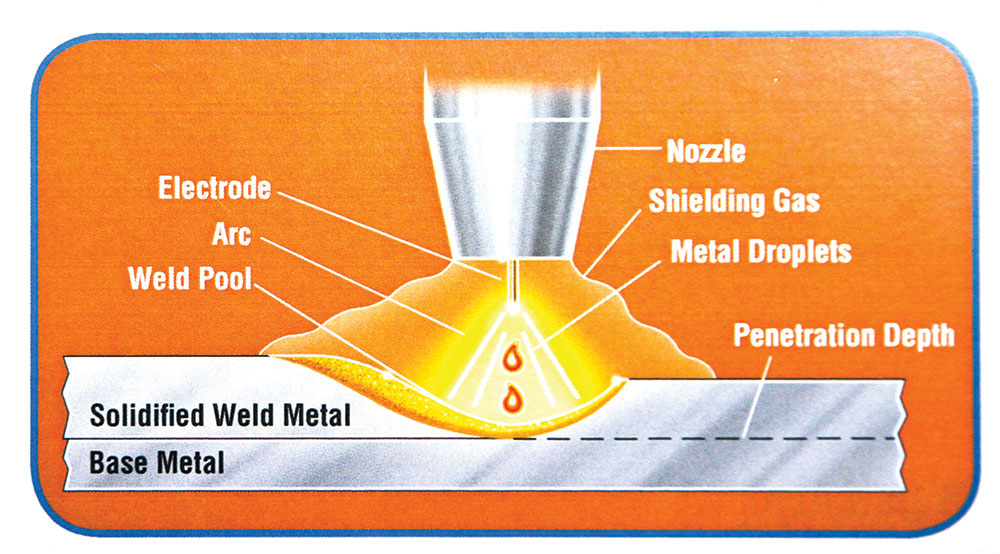
Fusing two pieces of metal requires melting them to the point that there is adequate penetration.
The Prep Work
Preparing the two objects you’ll be fusing is essential, and because things rarely break with smooth surfaces you will need to bend, file, or grind them into compliance. Use Vice-Grips or a C-clamp to fit them in place and be sure to clean surfaces of paint, grease, and rust. Filing a bevel on joint surfaces will help attain sufficient penetration. Finally, make sure you protect fuel and air locker lines, clear the area of flammable material, and have a fire extinguisher handy.
TIP: Make sure to clean joint surfaces and bevel edges.
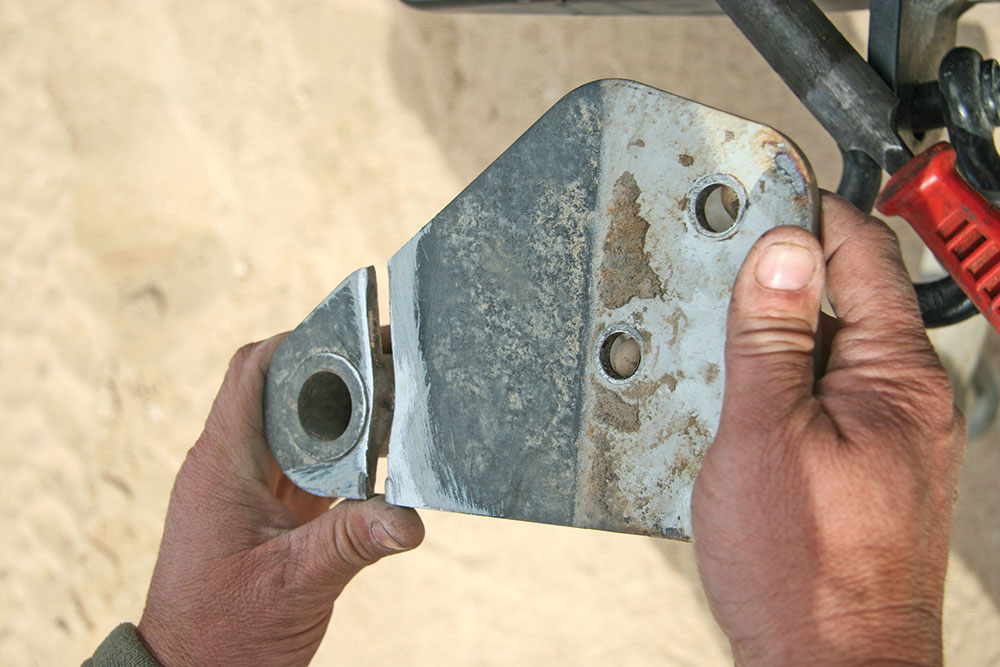
This suspension bracket failed deep on the Baja Peninsula and required considerable prep work to get it ready to weld.
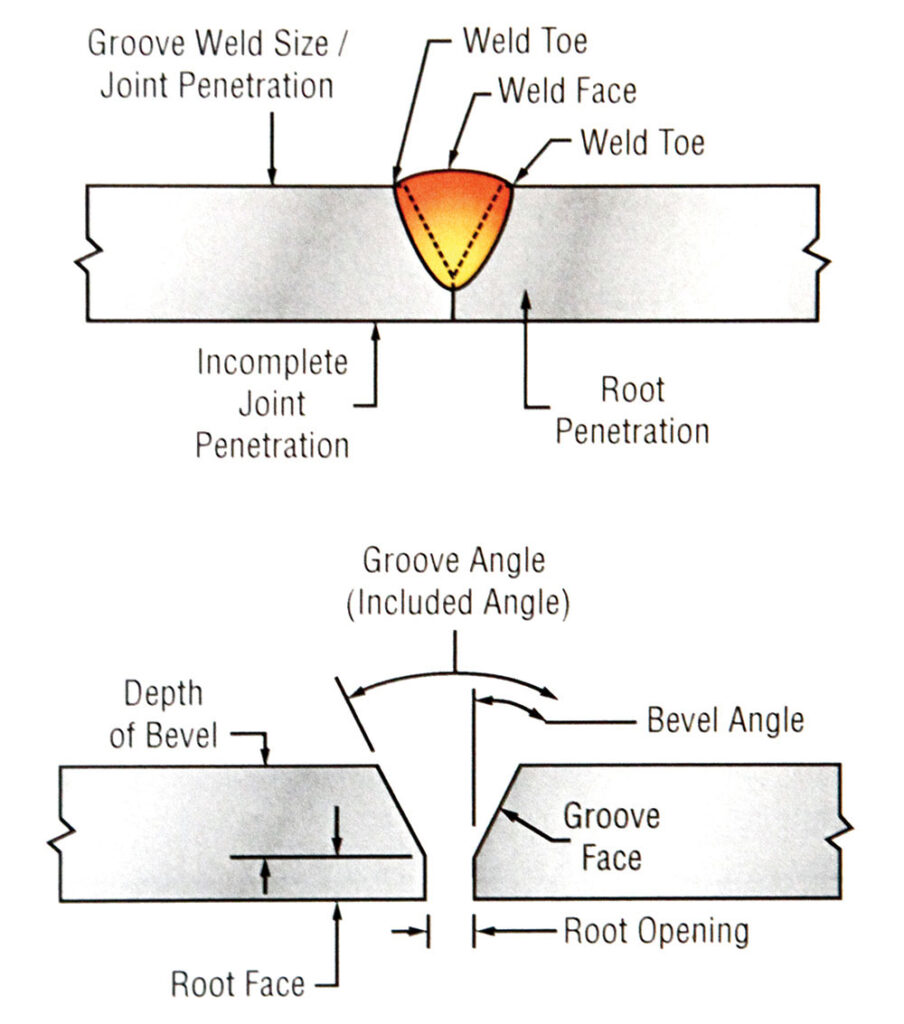
Beveling components allows the weld pool to build, creating a continuous bond between the two surfaces.
Backcountry Welding Options
Options can be distilled into three categories, the alternator-driven base unit, mobile wire-feed, and run-whatcha-brung battery setup. The first and last utilize shielded metal arc welding rod (SMAW), while the wire-feed incorporates gas metal arc welding (GMAW), referred to as MIG (Metal Inert Gas).
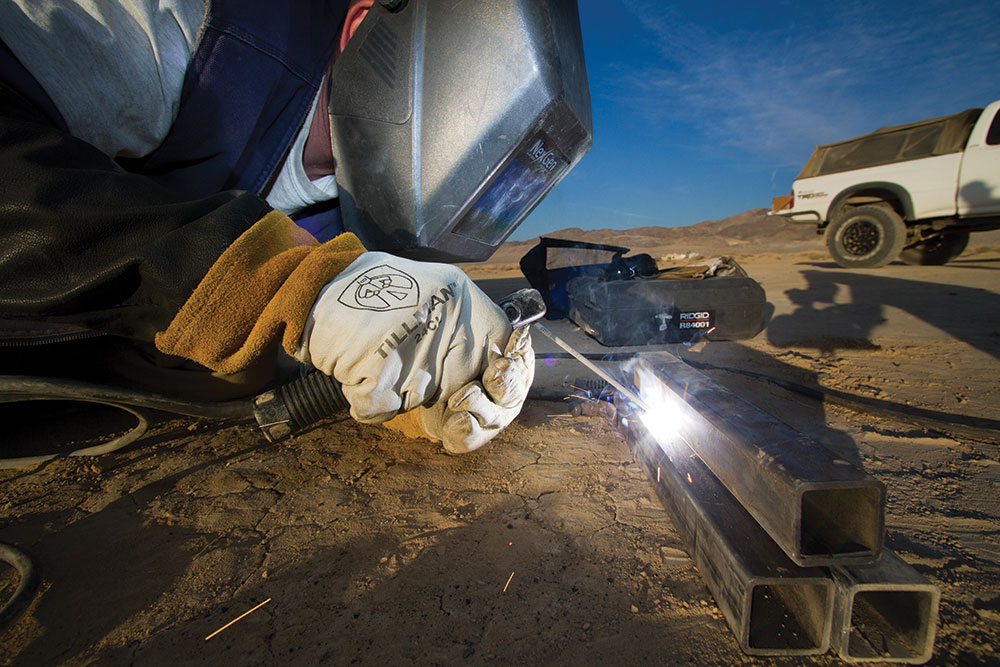
There is no substitute for practicing in the field before something actually breaks.
Grab-n-Go
GMAW products such as the Ready Welder are similar to wire-feed MIG units found in a shop. The exceptions being they use flux-core wire, which eliminates the need for a bottle of shielding gas, and can be powered by 12-volt batteries. Pros include the ability to move the unit from one rig to another, while cons are that batteries contain a finite amount of energy, and the constant power output can be too hot for thin metal. Although flux-core is notoriously messy, you can adjust the feed rate to match needs and newer Ready Welders feature adjustable amperage.
Batteries are connected in series (positive to negative), with the open terminals leading to the ground lead and welding gun. Depending on the number of batteries in the series, voltage is increased to 24 or 36. Two fully charged high-output batteries will usually provide enough energy for most jobs (30 to 45 minutes). It is best to remove them from the vehicle(s), and imperative they are disconnected from the car’s electrical system (you can cook the ECU). For a rookie welder like me, I have found wire-feed much easier to use and my Ready Welder has become standard grab-n-go kit in my rigs.
TIP: Make sure donor batteries are disconnected from the vehicle’s electrical system.
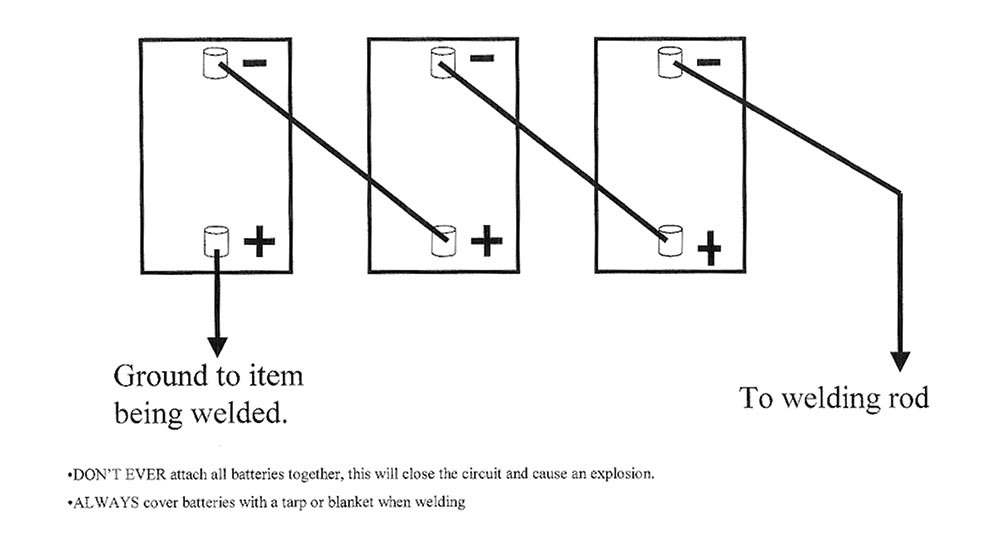
Batteries are connected in series to increase voltage.
Under the Hood
The Premier Power Welder has been around for decades and is the crem de la crem of vehicle-based stick welders, the ideal backcountry welding kit. Powered by a high-output alternator, it converts energy to high-frequency DC current. The benefit is you won’t be worried about draining your batteries, and there is no voltage drop when using longer cables. It also has a 6- to 36-volt battery charger, 100-percent duty cycle, and 115-volt DC outlet for running power tools.
The unit is about the size of a sixpack, can mount up under the hood, in the cab, or remotely so long as you don’t expose it to submersion. To reach optimal alternator output the engine must be spooled up to between 2,000 and 3,000 rpms. This is accomplished with the provided throttle adjuster cable, but it might be trickier with newer drive-by-wire vehicles.
Premier’s Greg Rogers helped me set mine up a decade ago, and it has bailed me out of a jam dozens of times. The 115-volt outlet is invaluable when it comes to prepping work surfaces, and I’ve used it in the backcountry to run an electric chainsaw.
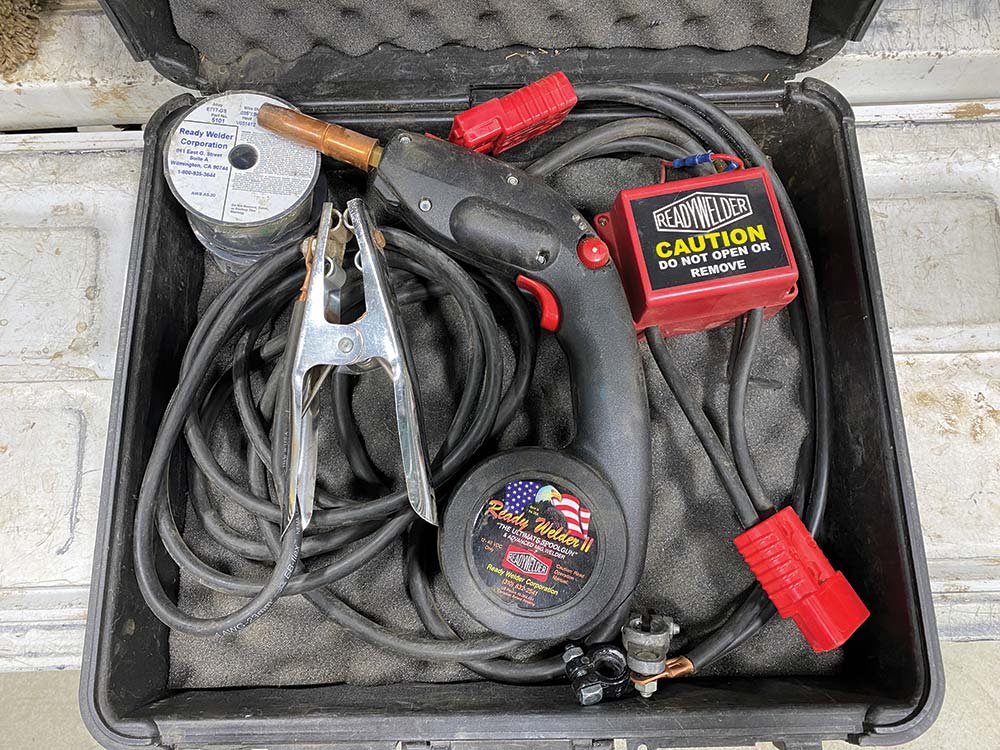
The Ready Welder flux-core wire feed kit includes the gun, ground cable, and Anderson plug connectors.
MacGyver Special
Battery welding is the Holy Grail of backcountry trail repairs, and exactly how the aforementioned knuckleheads got out of their pickle. The old timers in my club years ago introduced the method to me before fancier options were available. The battery setup is the same as with the Ready Welder, but instead of a proper ground and wire-feed gun you utilize jumper cables, connecting leads, and welding rod. Yep, you create a dead short and your weld joint receives its fury. Warning: Risks include unplanned fireworks, overheating the batteries (explosion), and injury. Yikes…right!
You will need two, possibly three, quality batteries to generate enough juice (electrons), and it is best to place them on the ground away from the vehicle. If using lead-acid units, cover them with a tarp and have someone monitor their temperature to avoid overheating and boiling over. I made a connector kit from #4 cable and terminal lugs for about $25, and use jumper cables for the ground and business end. While it sounds sketchy, you can certainly accomplish it safely and with moderate success.
TIP: Disconnect or remove batteries from vehicle, shield them, and have someone monitor temperature.
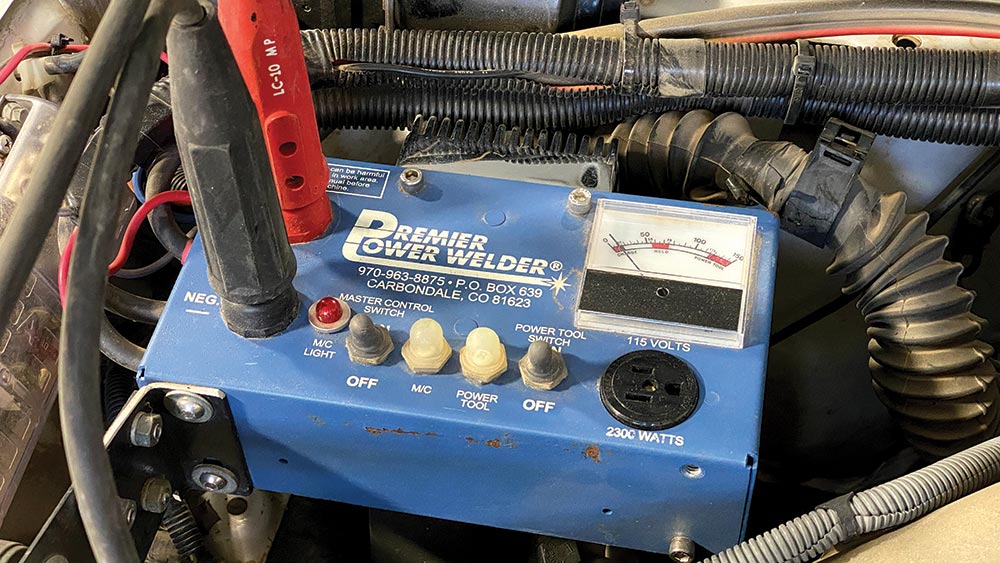
My Premier Power Welder will not only weld, but also has a 115-VDC, 2,300-watt receptacle for running tools, incandescent lights…and even a blender!
The Technique
Years ago, I spent a day at The FabSchool, an accredited fabrication and welding institute in Southern California. They walked me through types of joints, how to position a wire-feed gun for the best arc and view of your workspace, and how to approach different types of metal. I’ve also spent time with Pat Gremillion (Premier Power Welder founder) learning about types of welding rod and how to feed it into the work area at the proper rate.
There were several common themes, which included getting the joint hot enough to create a molten pool of metal, keep the electrode (rod or wire) moving from side-to-side in a crescent pattern to ensure even penetration, and to relax.
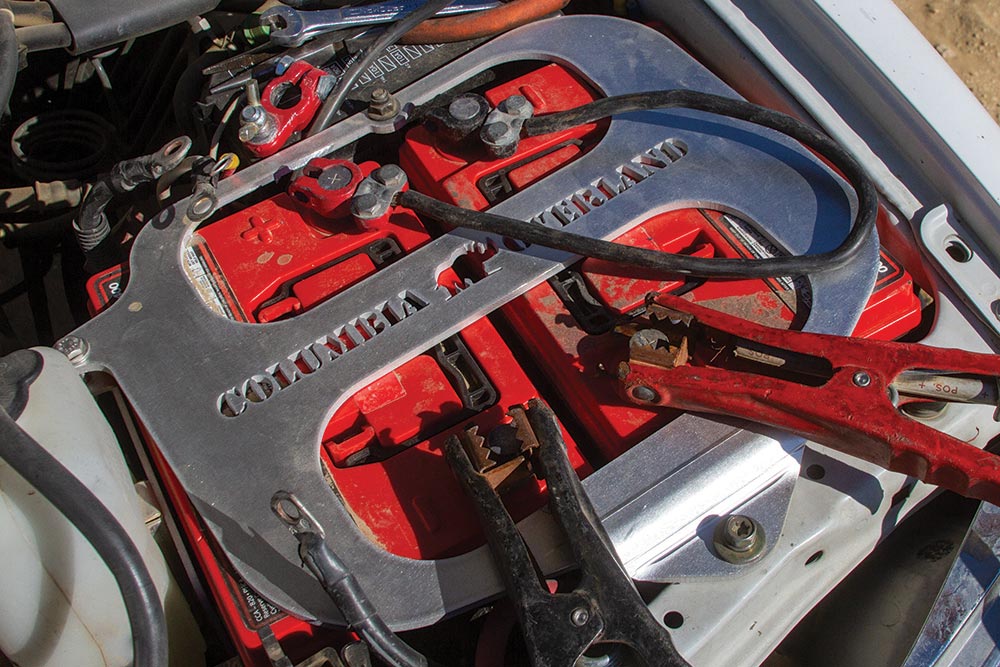
The MacGyver special and Ready Welder require at least two high-quality batteries such as the Odyssey Extreme.
The other common theme was to practice, practice, practice. You’ve got to put the time in if you’re going to get good at backcountry welding. When you have your chosen kit in place, grab some scrap steel and practice in your garage. Make a few dry runs (no power), breathe, and visualize the work you are about to do. Practice a butt joint, T joint, and flat weld, then knock the slag off and inspect. My first attempts (left) were miserable, but after a while I was getting good penetration, the desired crescent pattern, and not burning holes (lingering in one spot). Don’t worry about messing up, just stay the course until you attain reasonable proficiency. Lastly, if your rod sticks when striking an arc, you probably need more power.
TIP: Practicing in your garage will pay off when things go pear-shaped in the backcountry.
With regard to welding rod, 6013 and 6011 (a.k.a. farmer’s rod) will work for most jobs and are easier to use. The higher-tensile-strength 7018 will provide a better weld but takes more finesse to use. Rod must be clean and dry, and for a couple of bucks I made a waterproof storage tube from ABS plastic pipe. My buddy Rich Currie recently made me a set of 25-foot, #4-gauge jumpers with commercial-grade clamps, which have been very handy.
TIP: Store welding rod in ABS tubing with a threaded cap.
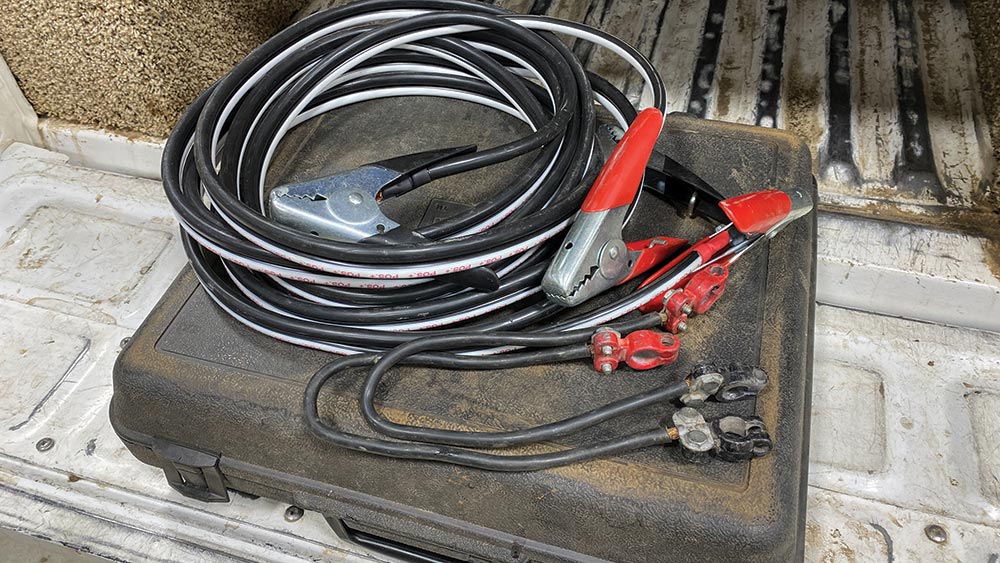
My kit includes two connector leads and 25-foot #4-gauge jumper cables.
The Wrap-up
Think of it this way: compare expanding your backcountry skill set to include welding to medical training. You may rarely need it, but when you do, the time invested will pay dividends. If you haven’t mastered the art but carry a kit, there is a good chance one of your mates knows how to weld. Lastly, I always leave my ego at home and defer to the most experienced welder in the group.
As for those boys and their steering arm, the repair was not a pretty one, but they made it off the trail. Now I’m apparently one of the old guys I use to call “old guys,” and as recently as last month found myself under a Jeep with welding rod in one hand, a grinder in the other, and several young guys taking notes. Happy welding, and long live the old guys!
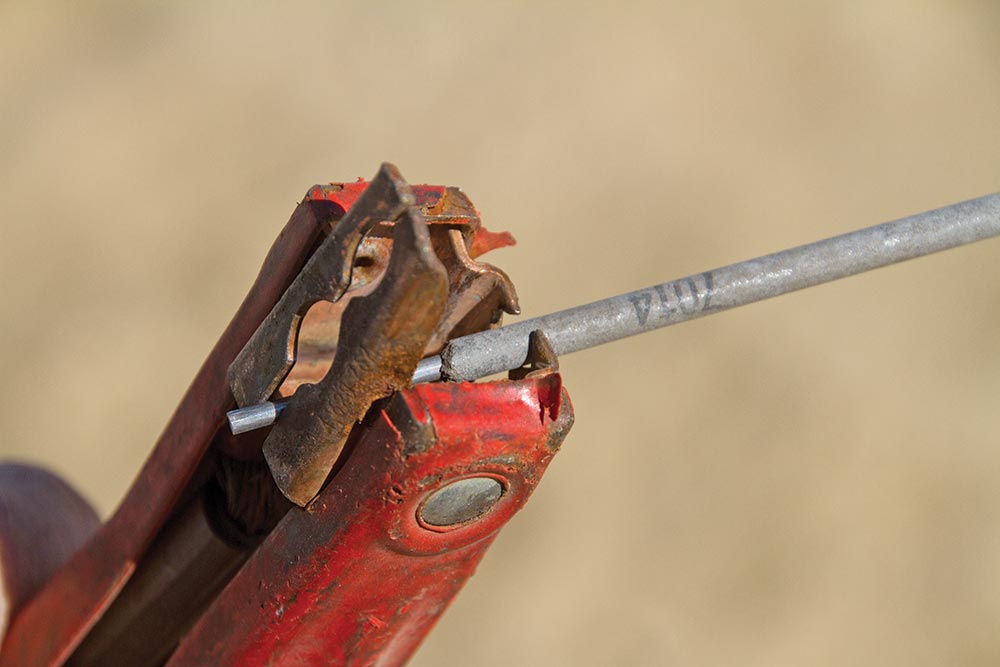
Jumper cables are used to hold the electrode (welding rod) during a battery-welding trail fix.
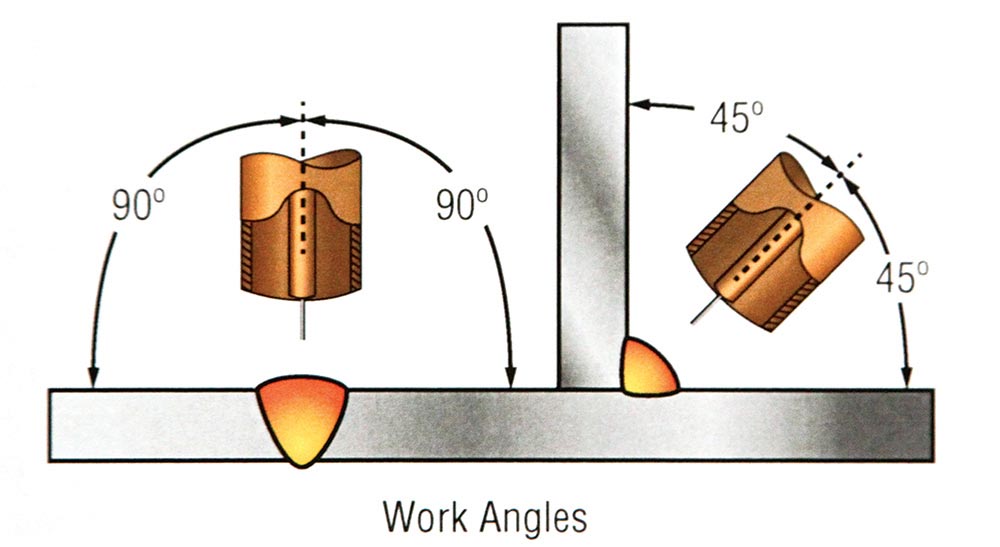
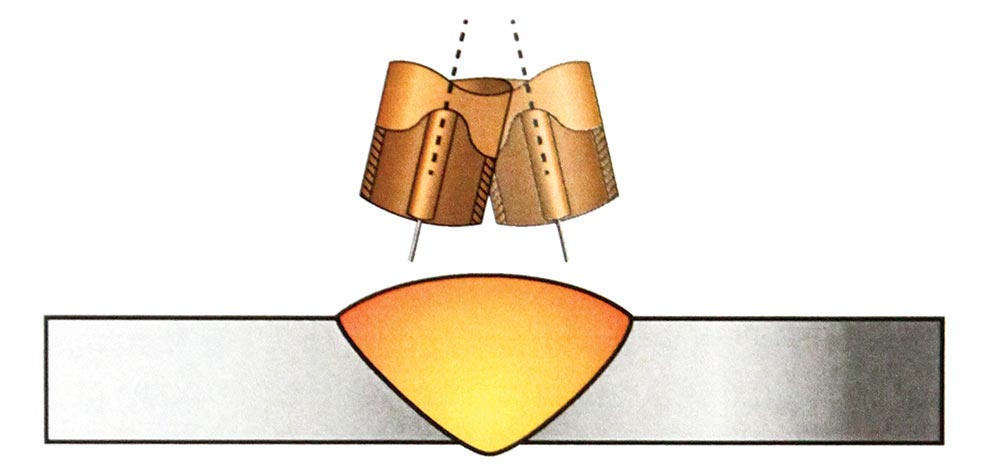
Gun or rod angle, distance from the surface, and constant motion and feed are key to a good weld.
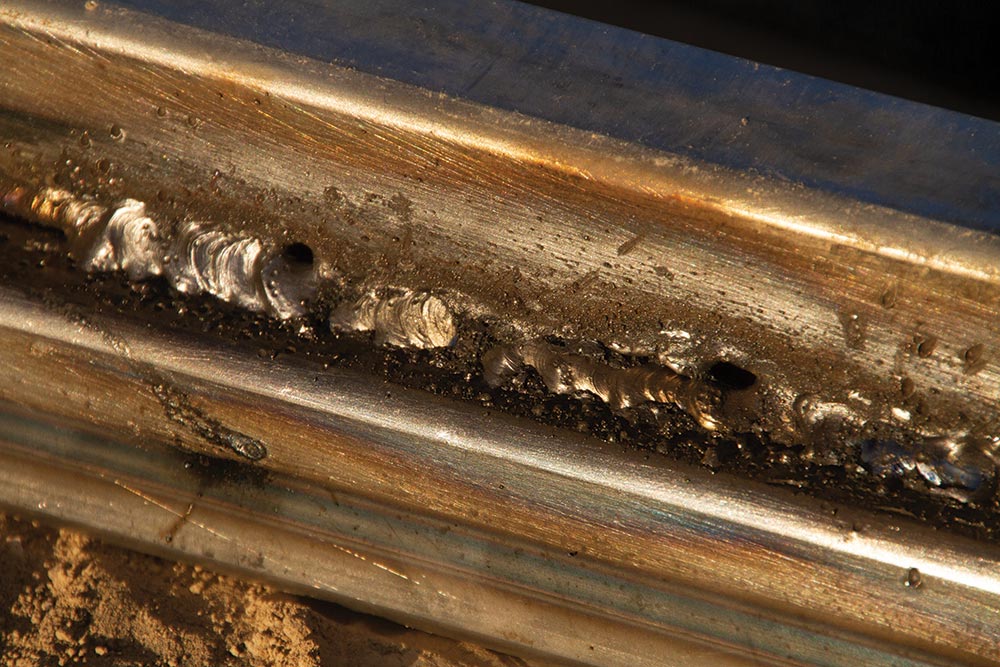
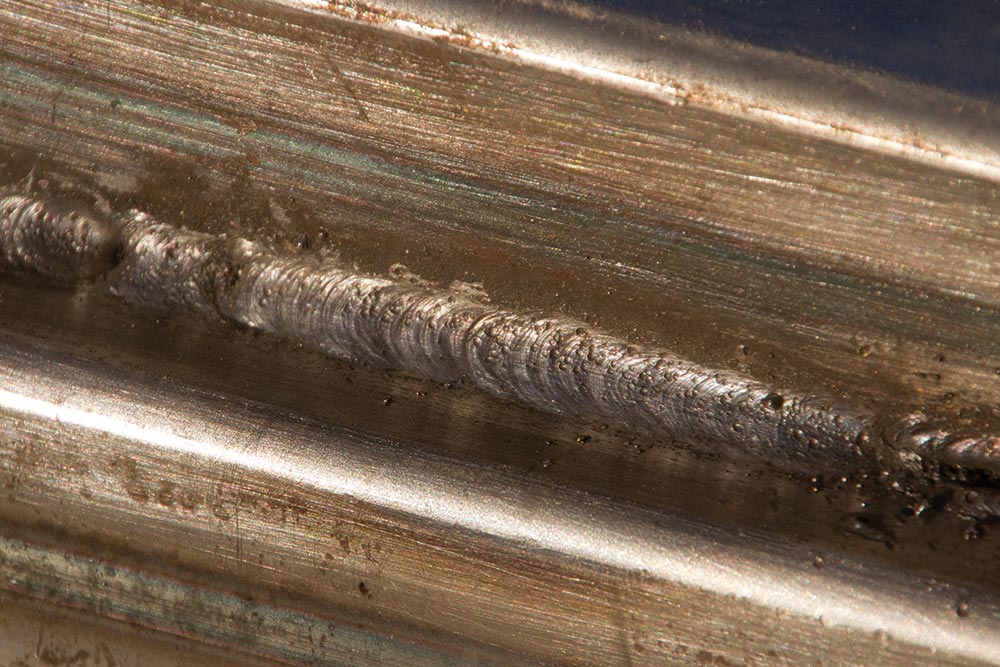
The top weld lacked penetration and lingering in one place burned holes. Below is what a proper joint should resemble
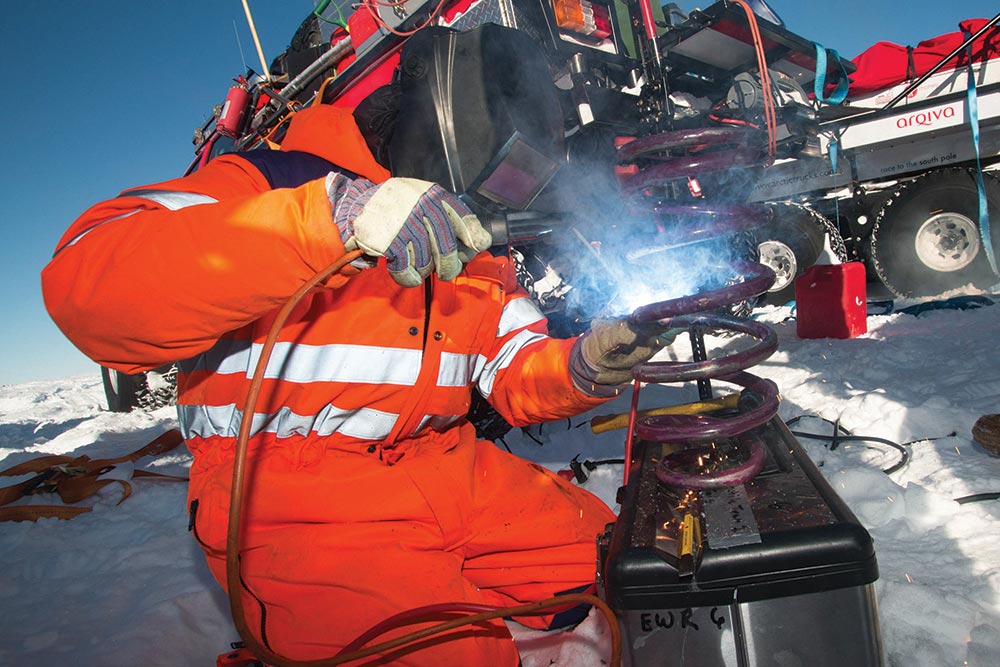
Spring steel, such as this coil that broke while crossing Antarctica, is nearly impossible to weld. This attempted fix failed in short order.
Editor’s Note: A version of this sotry previously appeared in the TREAD January/February 2023 issue.



